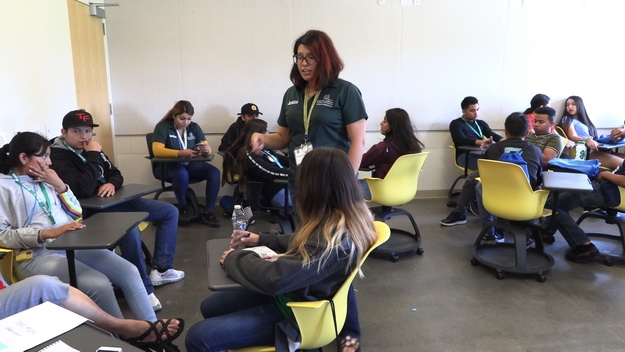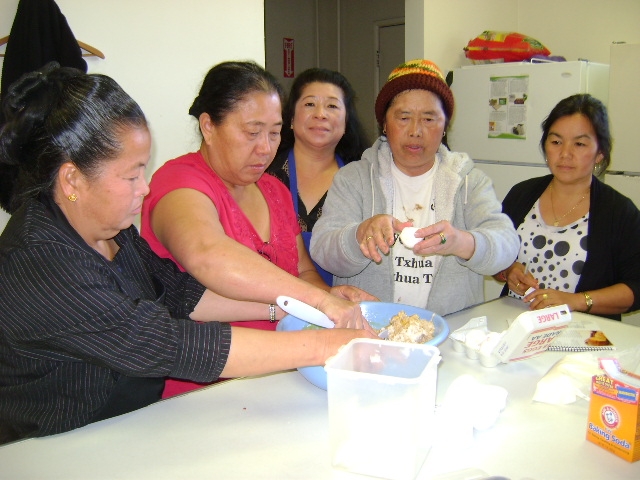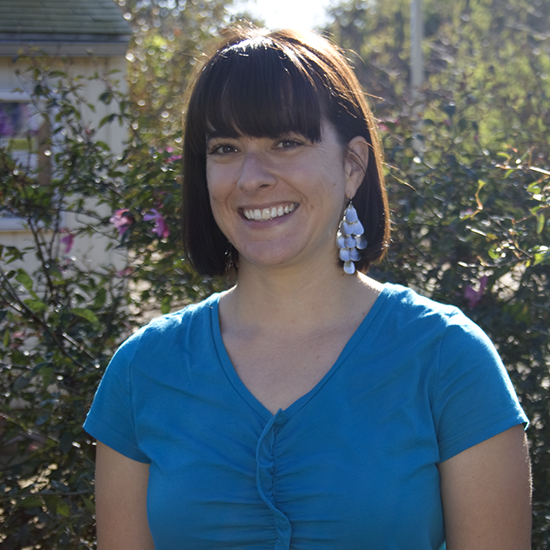- Author: Ricardo Vela
Both women face many cultural and economic challenges to achieve their missions, and thanks to their tenacity, dedication and hard work, they have turned their goals into a reality.
Claudia P. Diaz Carrasco, a native of Atizapán de Zaragoza, State of México, has been part of UC ANR since 2015 as Youth Development advisor focusing on Latino and/or low‐income youth and families.
“When I joined ANR, there were really few people in the state and around the country doing work intentionally with Latino youth development and 4-H,” said Diaz-Carrasco.
Since joining 4-H, Diaz-Carrasco has been instrumental to increasing Latino participation in 4-H programs. She works in the Inland Empire, which includes Riverside and San Bernardino counties — two of the largest counties in California, with almost 5 million residents; 65% are Latino.[i]
“About 60% of school-aged youth in Riverside and San Bernardino are Hispanic/Latino,” said Diaz-Carrasco. “Since the beginning, the primary focus of my position has been to develop, implement, evaluate, strengthen and expand local 4-H programming to serve the current under-represented population better."
In an environment that is generally not friendly to changes and challenges, Diaz-Carrasco faces a daily array of obstacles to achieve her goal. Among them are high levels of poverty among the families she serves, high crime rates in some communities, and a lack of interest from the parents, who in most cases work two or three jobs to make ends meet.
“The success of my work as the University of California Cooperative Extension (UCCE) advisor relies on how effective my extension team and I can be in sharing knowledge gained through research, education and program evaluation, and transferring it to the communities we serve in ways that are relevant for their day to day lives while embracing their cultural context,” said Diaz-Carrasco.
The knowledge that Diaz-Carrasco and her team bring directly to the youth, their families and communities in the Inland Empire creates positive changes and healthier lives.
“The way we educate the public matters, who are our educators matters. Science and culture are at the core of every program we have implemented since I started,” Diaz-Carrasco said.
Diaz-Carrasco gives three reasons why her work is penetrating the thick layers of the communities she serves. The first one is that she is an immigrant, like many of the families she works with day in and day out. “I approach my work, knowing that a lot of people are going or have gone through the same process I went through in 2014.”
She also cites thinking out of the box as another reason for her success. “I believe creativity and flexibility are at the core of any programs I develop.”
To exemplify this statement, Diaz-Carrasco and her team partnered with the Mexican Consulate in San Bernardino, where they held a successful summer camp and strengthened the partnership with the Consulate. Youth were able to participate in this unique program that aims to help them embrace their Mexican identity, even when in some cases they or their parents cannot travel outside the US.
The summer camp program was designed to increase positive ethnic identity, and to provide youth development reflecting the Latino and immigrant experience and the physiological and social effects of discrimination. The program also responded to economic poverty by assisting families with transportation, providing snacks and in some cases other items such as toothbrushes, water bottles or connecting families to health and food agencies. “Above all, we held the camp in a place that the families were already familiar with and felt safe, the consulate!” said Diaz-Carrasco. “We turned their art gallery, where official agreements are signed, into a playground. That's what I mean by out of the box.”
The interest in the program was visible from day one. In a matter of hours, 100% of the participants were reached. In the end, the parents expressed their gratitude for offering the programs in an accessible way.
Thinking out of the box has also allowed Diaz-Carrasco to partner with major companies in Southern California for the benefit of the youth.
In five years, Diaz-Carrasco has been able to increase 4-H membership in her area from 667 to 6,021. The overall percentage of Latino youth in 4-H went from 28% to 85%, and the number of volunteers grew from 175 to 354.
In the words of Sofia, a Moreno Valley student and one of the participants in the 4-H Juntos conference, “Juntos 4-H provides a home and a place where you can safely feel like it is your community. I hope expanding the program gives more students an identity as to what the community is like and that there are people who care for them and have someone to relate to and trust.”
In the heart of California's Central Valley, far from the busy streets of the Inland Empire, almost 100,000 ethnic Hmong call communities like Merced and Fresno home. This community has grown from 1,800 in April of 1982 to nearly 95,000 in 2019.[ii]
UC ANR has supported the Hmong communities in diverse areas, from farming to nutrition. For the past 34 years, Sua Vang, Community Health Education Specialist with the Expanded Food and Nutrition Education Program (EFNEP), has been educating these communities on the value of healthy eating.
“In 1986, I first moved in from San Diego, and I was looking for a job. My husband happened to be a community aid specialist for low family aid,“ said Vang. “So the EFNEP program asked to have two nutrition educators for this position, he happened to be there, I happened to be looking for a job, and I got hired.”
Tens of thousands of Fresno County families have benefited from her nutrition lessons during three decades of bringing healthy habits to Hmong families. Vang has faced a lot of cultural problems while doing it.
“When we go to recruit for our nutrition program, the husband has to approve it and sometimes the husband does not give his support,” said Vang. “It doesn't matter if the wife would like to take the class.”
Cultural eating habits are also a big challenge, obstacles she has overcome with patience, tenacity and creative thinking. “People from Southeast Asia don't eat or drink milk a lot,” she said. “I introduce the almond milk and rice milk so that even if they have lactose intolerance, they can still have milk and calcium in their diet.”
Vang speaks four languages: Hmong, Lao, Thai and English. She has used different platforms to bring the nutrition programs to the Hmong communities, from churches to private homes to classrooms to airwaves. Vang stresses how challenging recruiting new participants to the nutrition classes has become through the years. The older generation of Hmong don't want to go out of their homes and the new generation, said Vang, are more interested in making money than living a healthy life. But she has a pitch for them. “I say to them, if you have a lot of money and your health is not doing well, you have diabetes, and you are dying out, who is going to spend that money?”
Considering that participants in Vang's nutrition classes are immigrants from countries where food safety and nutrition are not part of their daily eating habits, the impact of her classes within the Hmong community is impressive. 73% of participants have improved in one or more food safety practices. Eighty-nine percent have improved in other areas, like reading nutrition labels and ensuring children eat a healthy breakfast.
“Thanks to this career, I would say that I have helped a lot of people, and I am glad. I know my family, my children are doing good, they eat healthily and they are doing good," Vang said. “I make a lot of new friends. I am delighted knowing that I help them.”
- Author: Ricardo Vela
"I love it when they say, ‘You've taught me something new.'” When Lisa Blecker hears these words from workshop participants, she says it is one of the greatest satisfactions in her role as a pesticide safety education coordinator with the UC Integrated Pest Management Program. She enjoys teaching people how to see their surroundings differently when it comes to working with pesticides.
"Participants who have spent years in the profession often say, 'I've been doing this forever, and I had no idea that my gloves had to be 14 mils thick,'" Blecker said.
At the end of their workshops, webinars, or in-person training, all the participants fill out a survey and the results are positive: 93 percent of last year's participants indicated plans to make a change in workplace safety as a result of attending the workshops. The results also indicate that as many as 62,901 fieldworkers and 12,071 pesticide handlers will be trained in pesticide safety by participants from these workshops.
Training keeps Blecker busy. Half the year, she and her team travel across California to conduct workshops that provide pesticide safety training for commercial and private pesticide applicators. She works closely with the California Department of Pesticide Regulation to promote, through testing, the basic competency requirements for applicators.
“We write the study material that helps them pass the test. We help people through our study guides to get occupational certifications or, in some cases, a license," Blecker said.
What also makes Blecker proud is the fact that she delivers her pesticide safety workshops in Spanish in addition to English.
"I think it's critical for a pesticide safety program, and many outreach programs in this state, to deliver the message in Spanish because so much of the agricultural and even the non-agricultural workforce around pesticides are native Spanish speakers," she said.
Blecker emphasizes the importance of the workshops in Spanish for on-farm applicators. Their education on safe pesticide use and decision-making has the potential to impact as many as 829,300 farm laborers across the state working in the vicinity of on-farm pesticide applications.
"Many of these laborers are Spanish-speakers, which further underscores the need for community education in Spanish; it is easier to deliver technical content in Spanish if you previously received that information in Spanish," Blecker said.
She learned Spanish many years ago in Panama during her time in the Peace Corps. There, she provided community outreach to regional farmers through agricultural education and has been proud ever since to utilize the skill that opened many doors in her profession. Her first experience educating the public on pesticides was in Idaho, where she learned the value of being bilingual.
"I had the privilege to work with the pesticide safety program in Idaho where there was a need for Spanish language delivery. I love speaking Spanish which helps me connect with the language even more because I also get to pair it with my love for education," Blecker said.
With workshops in communities near the border with Oregon to the border with Mexico, Blecker has a vast area to cover. And that is only one of the many services her department provides. Another service is offering courses in continuing education for those interested in maintaining a license to apply pesticides. The licenses must renew every two or three years.
In 2019 alone, Blecker taught 34 in-person continuing education programs to a total of 1,987 applicators across the state who already hold licenses. Some of the topics include proper selection and use of personal protective equipment, respiratory protection, and safe use of pesticides in the landscape. A pesticide safety educator on her team delivered 10 similar programs to an additional 1,275 applicators last year.
"We also provide statewide train-the-trainer workshops because the U.S. Environmental Protection Agency and the California Department of Pesticide Regulation require certain people to go through an approved train-the-trainer program, so they can, in turn, provide pesticide safety training to field workers and pesticide handlers.
“We are approved by both the US EPA and by the Department of Pesticide Regulation to provide this curriculum," Blecker said.
She attributes the success of her department to the passion and hard work of her staff.
"I am proud of my program, but I'm very well aware of the fact that I can't run this extensive program on my own and I depend on my valued and talented staff," Blecker said.
She and her team promote the economy and a better lifestyle for all Californians, embodying the true nature of UC Agriculture and Natural Resources public values.
Blecker envisions a new direction for her department, one that will benefit even more Californians.
"I would love to follow that model where we work with employers to create policies that contribute to a safe workplace because it's not enough to just train people to do their job or to train them to keep their licenses," she said.





